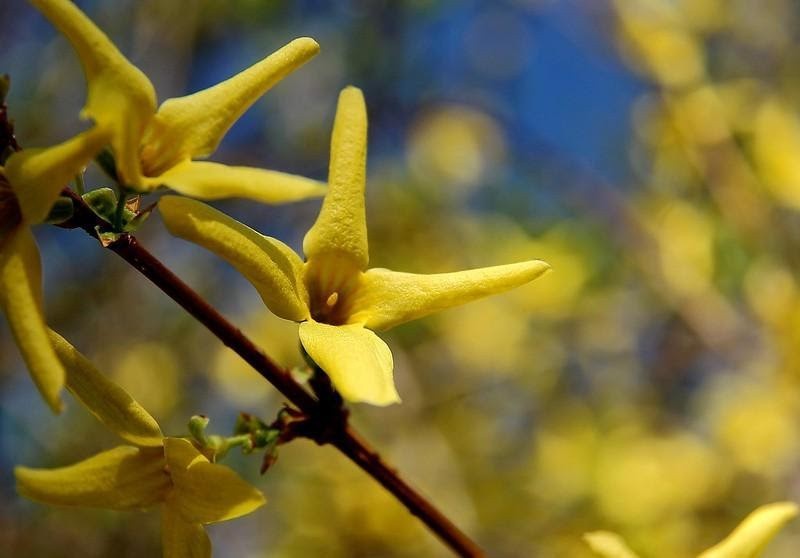When Flowers Bloom: Best Plants You Can Grow to Welcome the Spring Season

With the unexpected events that occurred during the pandemic, it seems that flower gardening has gained popularity among homeowners. Of course, it offers many benefits from recreation down to environmental, and it doesn't stop there. They also provide aesthetics to your home once they are in full bloom.
Flowers easily attract pollinators, which are essential to biodiversity, and for maintaining healthy crops and vegetables in your yard. It is not only the pollinators, though. Growing colorful and beautiful blossoms also acquire an audience, especially during spring, the season when fresh buds bloom and everything is back to life again.
If you plan to plant some flowers in your garden but do not know which ones would best suit you, this is the perfect article for you! Here are some of the best flowering plants you can grow for your spring garden.
Forsythia
There's nothing more satisfying than to get early spring color with forsythia. Their bright, sunshine-colored blooms make it possible to welcome the early days of spring filled with cheer, positivity, and enthusiasm. After all, yellow is the color for happiness. Forsythia is hardy in USDA zones 5 to 8, and while they are quick and easy to cultivate, there are a few things you should keep in mind.
They love to be exposed to full sun, so make sure that they can get at least 6 hours of sunlight daily. They can tolerate either average soils or rich with organic matter as long as it is well-drained. Depending on which type you have, they can reach a height of 12 inches, even up to 10 feet.
Lily of the Valley
Lily of the Valley contains tiny, white, bell-shaped flowers that fill the spring garden air with their sweet-smelling fragrance. Unlike forsythias, they can easily thrive in damp areas with partial shade. They are also adaptable and can grow pretty well in dry shade.
This flower is a favorite among weddings and has gained a reputation for being quite a royal wedding charmer. In fact, many royal brides like Kate Middleton have used Lily of the Valley in their bouquets as they walked down the aisle to their prince. Simply romantic and royal-like!
Hyacinth
Hyacinths are fairly recognizable because of their powerful sweet-spicy scent and cluster of flowers with vivid colors. They are easy-care spring bulbs that are grown outside the garden, but they can also grow well indoors when given the proper condition and environment.
You can choose plenty of different hyacinth varieties that give you a show of different colors, including tones of white, purple, yellow, and pink.
Winter Aconite
This buttercup-like bloom offers a jolly color of bright yellow in your garden in the early spring. However, some varieties prefer to bloom at the earliest chance possible, so don't get surprised if you see them popping even when the ground is still filled with a little snow.
True to its reputation as a low maintenance plant, Winter Aconites doesn't require any special care or pruning. You can simply leave them to thrive on their own. They don't appeal much to pests, rodents, and other insects that destroy your garden, so they are ideal for planting in areas where these creatures gather.
Puschkinia
You might be more familiar with Russian Snowdrop or Striped Squill. Either way, they are just common names associated with the genus, Puschkinia. This silent charmer has dainty flowers of porcelain white with a bluish stripe at the petals' center. They grow up to only about 6 inches tall and are good for mass plantings or ground covers.
Puschkinias' special features include being naturally fragrant, pollinator-friendly, and can tolerate growing under evergreen trees. It is also included in the list of RHS awards of Garden Merit for ornamental plants.
Iris
Metaphorically speaking, irises are definitely eye-catching with their rich and vibrant rainbow colors. This perennial plant can be easily grown in the garden and is greatly suitable in USDA hardiness zones 3 through 9. They also vary in size from as short as six inches to four feet. The varieties include dwarf, dutch, and tall bearded.
Remember, this flower, like most flowers, cannot blossom without sunshine. They can tolerate partial shade, but if you want to see them bloom in their colorful best, it is ideal to put them in areas where they can get full sun.
Bloodroot
Popularized for its medicinal purposes, significant contributions back in the day as war paint and other ritualistic uses, you should surely not miss out on having this spring flower in your yard. Despite the name, bloodroots aren't really bloody red but rather snowy white with yellow centers.
It is important to water them regularly to keep the soil moist and prevent them from growing dormant.
Takeaway
Adding a simple touch of natural beauty to your landscape is not only beneficial to the environment but also a wonderful sight to behold. The flowers' gentle nod or bent structure that seems to follow the direction of the breeze offers a pure moment, one you will never forget for years to come. This is probably the reason why spring, as they say, is the most beautiful season of all!
Subscribe to Latin Post!
Sign up for our free newsletter for the Latest coverage!
© 2026 Latin Post. All rights reserved. Do not reproduce without permission.















